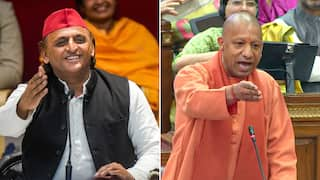Old Tax Regime Vs New Tax Regime: Should You Consider Moving To New One Now?
FM has not only expanded the income tax brackets under the simplified regime but also increased the standard deduction from Rs 50,000 to Rs 75,000, making a crucial step to promote the new tax regime

Old Tax Regime Vs New Tax Regime: Finance Minister Nirmala Sitharaman made significant adjustments to lower tax rates under the new tax regime in the Union Budget 2024 on Tuesday, signalling an expected transition from the old tax regime. Taxpayers are now encouraged to transition to the new tax regime, as it offers greater incentives. However, individuals benefitting from substantially higher deductions may still find the old tax regime appealing.
Sitharaman has not only expanded the income tax brackets under the simplified regime but also increased the standard deduction from Rs 50,000 to Rs 75,000.
New Income Tax Regime Slabs
Up to Rs 3 lakh, the tax is NIL
From Rs 3 lakh to Rs 7 lakh the tax rate is 5 per cent
From Rs 7 lakh to Rs 10 lakh the tax rate is 10 per cent
From Rs 10 lakh to Rs 12 lakh the tax rate is 15 per cent
From Rs 12 lakh to Rs 15 lakh the tax rate is 20 per cent
For above Rs 15 lakh income the tax rate is 30 per cent
Old Income Tax Regime Slabs
Up to Rs 2.5 lakh, the tax is NIL
From Rs 2.5 lakh to Rs 5 lakh the tax rate is 5 per cent
From Rs 5 lakh to Rs 10 lakh the tax rate is 20 per cent
For above Rs 10 lakh income the tax rate is 30 per cent
Sharing his take on the latest adjustments in the new tax regime with ABP Live, S Vasudevan, Executive Partner at Lakshmikumaran and Sridharan Attorneys, said that introducing the lower rates under the new tax regime indicates the government’s intention to gradually ease out the old regime. However, it should be noted that with the latest changes proposed for the new tax regime, an individual will only gain Rs. 17,500 compared to the tax liability in the new tax regime until the last assessment year.
“Would this be enough to incentivise people to move to the new tax regime is not a binary question, as the answer depends on various factors and income brackets of each taxpayer. It is worth noting that the old tax regime gives the benefits of claiming deduction towards certain exempt allowances such as HRA, LTA, etc. which are incurred in the course of employment. Moreover, the old tax regime grants deductions under Chapter VI-A of the Income Tax Act, such as the deduction for contributions to Provident Fund/ Life Insurance under Section 80C up to Rs 1.5 lakh, deduction towards premium paid for health insurance under Sec 80D up to Rs 50 thousand, deduction under Section 80TTA for interest on saving banks accounts upto Rs 10 thousand etc., which are not available if the individual opts for taxation under new tax regime,” he added.
Vasudevan further explained that a detailed comparison between the old and new tax regimes must be conducted on an individual basis to determine the potential savings. Generally, for individuals in the 30 per cent tax bracket, with a gross taxable income exceeding Rs 15,00,000, if the total of exempt allowances and deductions available under Chapter VI-A exceeds Rs 4,33,333, the old regime typically offers greater tax efficiency. Conversely, for those in lower tax brackets, such as individuals earning up to Rs 7,75,000 annually, the new tax regime is usually more advantageous due to higher standard deductions and rebates under Section 87A, resulting in zero tax liability.
Also Read: How Will Budget 2024 Impact The Aam Aadmi? Interpreting Middle-Class Worries
Here Is A Little Breakdown In Different Salary Brackets
If a taxpayer earns Rs 5 lakh, the tax liability in the old tax regime amounts to Rs 12,500, but due to the rebate available under Section 87A of Rs 12,500, the total tax liability is reduced to zero. Similarly, in the new tax regime, the tax liability is Rs 10,000, but eligible taxpayers can claim a rebate under Section 87A, thereby reducing the tax liability to zero.
Under the old tax regime, if a taxpayer earns Rs 10 lakh, the initial tax liability amounts to Rs 1,12,500. After applying the rebate under Section 87A, the liability is reduced to Rs 1,00,000. In contrast, under the new tax regime, the tax liability is calculated as Rs 50,000 (5 per cent of Rs 4,00,000) + Rs 30,000 (10 per cent of Rs 3,00,000), making a total of Rs 80,000. After deducting the 87A rebate of Rs 25,000, the final tax liability is Rs 55,000. Therefore, the difference between the tax liabilities under the two regimes is Rs 45,000.
For a taxpayer earning Rs 15 lakh, under the old tax regime, the tax liability initially is Rs 1,12,500 + Rs 1,50,000 equals Rs 2,62,500. After applying the rebate under Section 87A, the liability is reduced to Rs 2,50,000. In the new tax regime, the tax liability is calculated as Rs 50,000 (5 per cent of Rs 4,00,000) + Rs 30,000 (10 per cent of Rs 3,00,000) + Rs 60,000 (15 per cent of Rs 2,00,000) accounts for a total of Rs 1,40,000. After deducting the 87A rebate of ₹25,000, the final tax liability is Rs 1,15,000. Thus, the difference in tax liabilities between the two regimes for this income bracket is Rs 1,35,000.
Also Read: Union Budget 2024: How Much Tax Will The Common Man Save Under The New Tax Slabs?
New Regime For People Who Prefer Not To Utilise Exemptions
Rahul Charkha, partner at Economic Laws Practice, highlighted the proposed amendments to tax slabs in the Finance Bill 2024 aimed at enhancing the attractiveness of the new tax regime. "However, where salaried individuals, even if availing any basic exemptions and deductions for house rent allowance, insurance premium, investment in ELSS, or provident fund is concerned, then the old tax regime may be beneficial in comparison to the new tax regime. This, however, depends on various factors, like the income level ratio of such exempt income to total income. One also needs to bare in mind that the rebate available under the new regime is higher than the rebate available under the old regime,” he added.
He said typically, salaried individuals who prefer not to utilise exemptions or deductions tend to benefit more from the new tax system. However, assessing the tax liability under both the new and old tax regimes is advisable based on individual circumstances. The option for salaried individuals to switch between the two tax regimes annually presents a valuable advantage that should be carefully evaluated and utilised as per one's financial situation and goals.

Trending News
Top Headlines










































